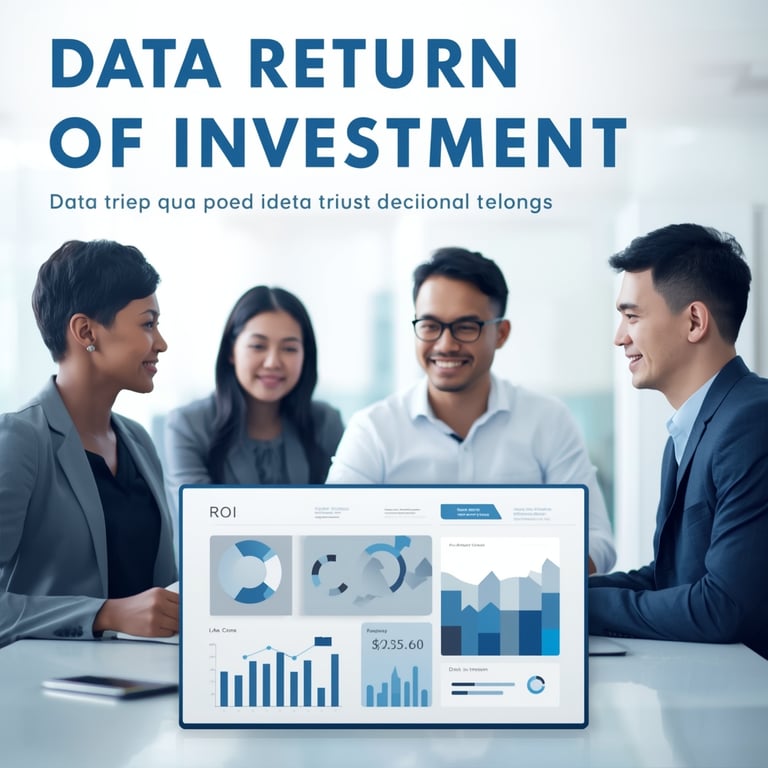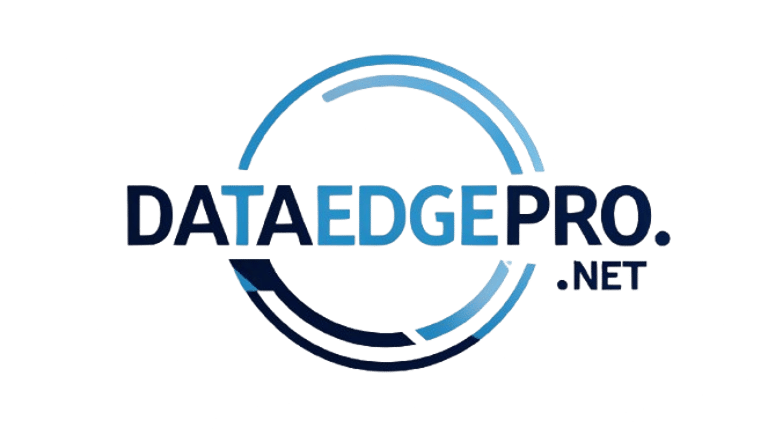The CDO's ROI Imperative
A Strategic Framework for Proving Data Value
FOUNDATIONS
Bernard Millet
10/21/20254 min read
Demonstrating tangible business value from data initiatives while competing for resources in an increasingly scrutinous economic environment. With 64% of CDOs struggling to communicate the value of their function and less than half (49%) establishing business outcome-driven metrics.
the gap between data potential and proven value continues to widen. This article presents a comprehensive framework for CDOs to measure, communicate, and maximize the return on investment (ROI) of their data initiatives, backed by recent industry research and successful implementation strategies.
The State of Data Value Measurement in 2025
The data landscape has fundamentally shifted. Organizations are prioritizing data quality improvement (49%) and integration (46%) for generative AI success, with 89% of executive teams directly involved in AI decisions. Yet paradoxically, proving the business value of these investments remains elusive for most organizations.
According to recent industry analysis, poor data quality costs the average organization $12.8 million every year , highlighting the substantial financial impact of inadequate data governance. Despite these staggering costs, CDOs with business-facing key performance indicators and partners across the business are 1.7 times more likely to demonstrate ROI and business value, suggesting that success is achievable with the right approach.
The challenge is particularly acute in the context of generative AI adoption. The most common challenge experienced in scaling up gen AI is data issues, cited by 39% of respondents in organizations moving ahead with gen AI, and 52% rate their data foundation's readiness for gen AI implementation a five or lower on a zero to 10 scale.
The Three Pillars of CDO Value Creation
1. Translating Data Initiatives Into Tangible Business Outcomes
The fundamental disconnect between data value and business metrics requires CDOs to adopt a portfolio approach that categorizes initiatives strategically. Organizations that focus on measuring incremental impact can quickly estimate value by understanding the delta between test versus control and translating those numbers into dollars earned or saved each month.
Successful CDOs are implementing what experts call the "Data ROI Pyramid" approach. This framework helps data leaders focus on the right metrics to generate value for stakeholders, with the CEO caring less about dashboard counts or SLA adherence percentages and more about overall business impact.
The Data ROI Pyramid: A Method for Measuring & Maximizing Your Data Team
https://www.montecarlodata.com/blog-data-roi-pyramid
The key to success lies in establishing clear value chains. For instance, Vista developed a chatbot in six weeks that managed 30% of customer service calls successfully, demonstrating immediate value that justified further investment in data quality improvements . This incremental approach proves value before scaling, making it easier to secure ongoing funding.
2. Justifying Long-Term Investments with Delayed Returns
CDOs must master the art of communicating future value for foundational investments. The foundation includes not just clean data, but proper capture, ingestion, curation, and transformation with appropriate standardization and structure.
The financial modeling approach has evolved significantly. Leading CDOs are now using techniques borrowed from venture capital:
Real Options Valuation: Quantifying the value of flexibility that data platforms provide
Cost of Inaction Analysis: Demonstrating competitive disadvantage from delayed investment
Risk Reduction Monetization: Calculating prevented losses from better decision-making
Many organizations report 30-500% returns on their investment in data quality through collaborative, organization-wide governance initiatives within 18-24 months, providing benchmarks for ROI projections.
3. Bridging the Communication Gap with Non-Technical Executives
The translation challenge remains critical. Seth Earley, founder and CEO of Earley Information Science Inc., emphasizes that "going from hype to value means focusing on use cases and specific outcomes and getting your data and data reference architecture right".
Successful communication strategies include:
Business-First Language: Leading with outcomes rather than technical achievements
Visual Storytelling: Interactive dashboards showing real-time value creation
Coalition Building: Enlisting business champions who can speak to data value from their perspectives
Analogies and Metaphors: Comparing data governance to financial controls or manufacturing quality systems
The DRIVE Framework: A Practical ROI Methodology
Based on analysis of successful CDO implementations, I've synthesized the following framework.
1/ Define Business-Aligned Metrics
Organizations with established data governance frameworks experience benefits such as improved data security (66%) and reduced compliance breaches (52%). CDOs should establish metrics that directly connect to business priorities:
Revenue impact metrics (customer acquisition, retention, upsell)
Cost reduction indicators (operational efficiency, error reduction)
Risk mitigation measures (compliance adherence, security incidents)
Innovation enablement (time-to-market, new product development)
2/ Record Baseline Performance
Without pre-governance benchmarks for data quality, compliance costs, and operational efficiency, it's impossible to demonstrate improvement. Essential baseline measurements include:
Current data error rates and their business impact
Time spent on data reconciliation and cleansing
Compliance violation costs and frequency
Decision-making cycle times
3/ Implement Incrementally
Organizing data for one use case is enough to move ahead and prove value, rather than building an enterprise-wide foundation without specific use cases.
4/ Validate with Mixed Metrics
Key validation approaches:
Quantitative: Cost savings, productivity gains, revenue increases
Qualitative: User satisfaction, stakeholder feedback, adoption rates
Strategic: Competitive positioning, innovation capability, risk reduction
5/ Evolve Continuously
Data governance programs are constantly evolving - as data changes, so must the programs that support data governance. This requires:
Regular metric reviews and recalibration
Adaptation to new business priorities
Integration of emerging technologies (particularly AI/ML)
Continuous stakeholder engagement
References and readings
Primary Research Reports
AWS & Harvard Business Review (2025). "CDO Agenda 2025: Scaling Generative AI for Value." Harvard Business Review Analytic Services.
AWS & MIT CDOIQ (2024). "CDO Agenda 2024: Navigating Data and Generative AI Frontiers."
Deloitte UK (2024). "Chief Data Officer Survey 2024."
Gartner (2024). "CDAO Agenda Survey."
Informatica (2024). "CDO Insights 2024: Charting a Course to AI Readiness."
Industry Analysis
Data Leadership Collaborative (2024). "Proving Impact and ROI Data Governance."
EDM Council (2025). "Data Office ROI Report: Playbook v1.1."
IDC (2024). "The Business Value of Data Governance Platforms."
McKinsey & Company (2024). "Analytics Comes of Age."
Monte Carlo Data (2024). "The Data ROI Pyramid: A Method for Measuring & Maximizing Your Data Team."
Organizational Sources
Alation (2025). "Data Governance ROI: What to Track."
Ataccama (2024). "Top 5 Initiatives CDOs Focus on to Bring Value."
Semarchy (2025). "From Cost to Profit: Maximizing Your Data Governance ROI."
ESSEC Business School (2024). "A Framework for Evaluating Data Value."


